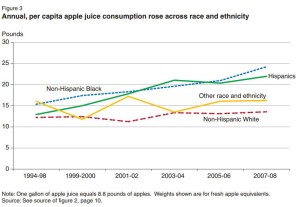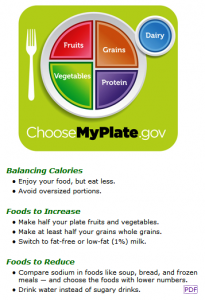USDA finalizes school food rules: Applause!
Last week, the USDA sent out a press release announcing the last four Final Rules for school meals under the Healthy, Hunger-Free Kids Act (HHFKA) of 2010:
- Smart Snacks: this makes “modest improvements” to standards implemented in the 2014 – 2015 school year in accordance with the interim final rule.
- Local School Wellness Policy: requires schools to meet the Smart Snacks standards.
- Community Eligibility Provision (CEP): allows schools with high poverty rates to provide free breakfast and lunch to all students.
- Administrative Review: updates the administrative review processes used by state agencies to monitor federally-funded school meal programs.
The press release summarizes USDA’s view of what’s most beneficial in these policies:
- Improving the nutritional quality of all school food.
- Increasing farm to school programs to more than 42,000 participating schools;
- Coordinating school meal certification with SNAP.
- Implementing national professional standards for school nutrition employees.
- Expanding At Risk After School Meals Program to all states;
- Revising the Child and Adult Care Food Program nutrition standards.
- Implementing mentor-based training for school nutrition professionals through the Team Up for School Nutrition Success initiative.
You probably won’t want to read all the fine print. Fortunately, others have done just that.
Bettina Siegel at The Lunch Tray
- Wellness policies will be required to prohibit on-campus marketing of foods and drinks that fail to meet the Smart Snacks nutritional standards.
- Whether companies can market “copycat” snacks in schools (Smart Snacks-compliant versions of junk food available in supermarkets) is left up to local districts.
- Also left to local districts are policies about incentive programs, such as Box Tops for Education or fast food coupons passed out to kids for reading books.
- School wellness policies will be required to set nutritional standards for foods and drinks offered to kids at classroom parties or by teachers as treats, but districts can determine the actual policies.
- Schools will be allowed to sell hard-boiled eggs, low-sodium canned vegetables, and peanut butter and celery.
Her bottom line:
With the finalization of these four rules, the historic work of the Obama administration in improving children’s school food environment is now complete. But, of course, we’re already one year overdue for the next CNR [Child Nutrition Reauthorization], a process which could easily roll back or weaken these reforms – many of which have already been overtly threatened by House Republicans.
- Local wellness policies must address marketing of foods and drinks that do not meet the Smart Snacks standards.
- Local wellness policies must involve the public and school community and produce an annual progress report.
- Local wellness policies must designate a school official for compliance and undergo administrative review every 3 years.
- School districts must update goals for nutrition promotion, nutrition education, physical activity, and school wellness activities based on evidence-based strategies.
CSPI says the new rules mean local wellness policies can and should:
- Shift unhealthy school fundraisers to profitable healthy food or non-food fundraisers
- Ensure that school celebrations support healthy eating and physical activity
- Use non-food rewards
- Provide ample opportunities for physical activity, quality physical education, and recess
My comments
Nutritionism: Many of the complaints about USDA’s nutrition standards derive from their focus on single nutrients—fat, salt, sugar—rather than on foods. Boiled eggs weren’t allowed because of their fat and cholesterol content, but copy-cat snack foods were. If the standards applied to minimally processed whole foods, they would make more sense. USDA now has to take comments on whether to eliminate the standard for total fat from Smart Snacks because of the egg issue and the confusing nature of current research on saturated fat (also a problem resulting from studying one nutrient at a time).
Politics: Regardless of how trivial some of these rules may appear, USDA’s school food standards must be considered an extraordinary achievement. Against all odds—unrelenting opposition from companies that supply junk food to schools, Congress, and, weirdly, the School Nutrition Association—the new rules will improve the nutritional quality of school meals and snacks, at least most of the time. School districts with officials who care deeply about improving the food served to kids now have a mandate to do so. Those who don’t will have a harder time doing a bad job. Applause to USDA for bringing the rules to closure. May they survive the next round of lobbying.




